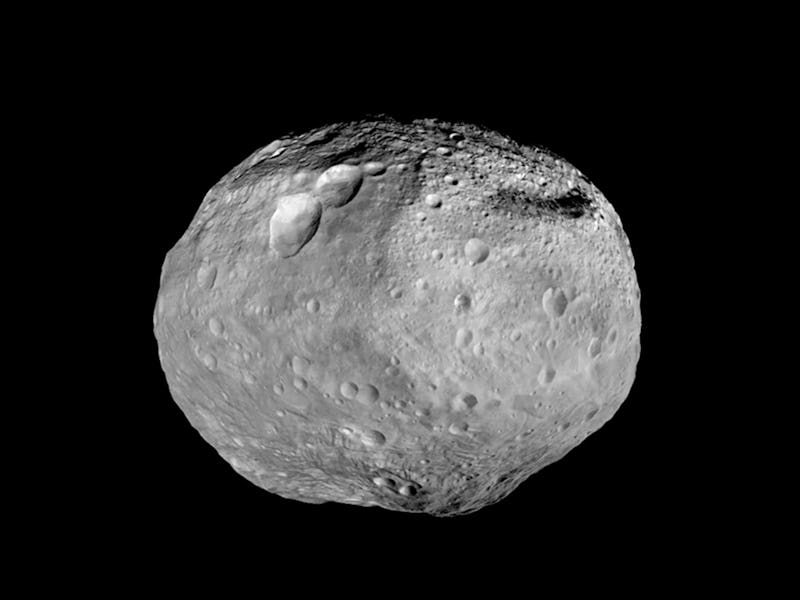A Sahara desert meteorite older than Earth tells a piece of our origin story
The meteoroid is more than a million years older than the previous record holder.

A small rock found in the Saharan Desert may hold clues to our early planetary system and how the Earth was formed.
A meteorite discovered in the Saharan desert was found to have broken off from a protoplanet from the early Solar System — before Earth and the remaining planetary bodies had formed.
The discovery was detailed in a study published Monday in the journal Proceedings of the National Academy of Science, and provides deeper insight into our planetary system billions of years ago.
WHAT'S NEW — The newly discovered meteorite was found in Adrar, Algeria, in May 2020, and was dubbed Erg Chech 002 (EC 002).
After analyzing the meteorite, a team of scientists led by the Centre National de la Recherche Scientifique in France found that it was unique. Most of the meteorites found on Earth are made up of basalt, a kind of rock that forms after lava rich in magnesium and iron cools off.
However, EC 002 contains an abundance of andesite. Andesite is found on Earth in areas where the planet’s tectonic plates have collided with one another, forming different layers on top of each other.
Pieces of the meteorite Erg Chech 002 were found to contain andesite, which was likely formed from an ancient protoplanet.
The meteorite was once molten, having solidified 4.565 billion years ago. Earth is believed to be 4.543 billion years old, meaning the rock predates our planet. The rock also has an interesting past: it is a small chunk off of an asteroid that originally came from a destroyed protoplanet.
Protoplanets are the primordial worlds that served as some of the largest objects that built the planets as we see them today.
"This meteorite is the oldest magmatic rock analyzed to date and sheds light on the formation of the primordial crusts that covered the oldest protoplanets,” the study’s authors write.
The findings suggest that early protoplanets may have merged with other planetary bodies or have been completely destroyed before the formation of the planets that orbit the Sun since they differ in composition.
HERE'S THE BACKGROUND — Meteorites are typically pieces of asteroids that have fallen off and floated through space before crashing into Earth. Meteors and other space rocks formed the building blocks of the solar system, including delivering organic compounds essential to life to Earth.
A meteorite hunter explores a desert in search of space rocks, in hopes that they inform us of our own beginnings.
Scientists study meteorites because they are like jigsaw pieces, each telling us a little more about the larger story of how the Solar System formed and how life came to be on our planet. Meteorites can be traced to particular “families” of asteroids based on their chemical composition. Andesite-rich meteorites are fairly rare, though a few have been found in recent years, including two discovered in 2009, and another in 2017.
WHY IT MATTERS — The discovery of the meteorite provides scientists with a rare look at the Solar System shortly after it had formed.
Around 4.5 billion years ago, a cloud of dust and gas formed the planetary bodies that make up the Solar System. However, scientists aren’t exactly sure of the process that took place, and what our young planetary system looked like during the early years. The andesite meteors could give crucial clues to what came before the planets were fully formed.
WHAT’S NEXT — Scientists will further analyze the meteorite sample in hopes that it will lend to their understanding of how planets such as Earth formed and evolved over time. If other similar samples are found, it could help us reconstruct what the volatile environment of the early solar system was like.
ABSTRACT — The age of iron meteorites implies that accretion of protoplanets began during the first millions of years of the solar system. Due to the heat generated by 26Al decay, many early protoplanets were fully differentiated with an igneous crust produced during the cooling of a magma ocean and the segregation at depth of a metallic core. The formation and nature of the primordial crust generated during the early stages of melting is poorly understood, due in part to the scarcity of available samples. The newly discovered meteorite Erg Chech 002 (EC 002) originates from one such primitive igneous crust and has an andesite bulk composition. It derives from the partial melting of a noncarbonaceous chondritic reservoir, with no depletion in alkalis relative to the Sun’s photosphere and at a high degree of melting of around 25%. Moreover, EC 002 is, to date, the oldest known piece of an igneous crust with a 26Al-26Mg crystallization age of 4,565.0 million years (My). Partial melting took place at 1,220 °C up to several hundred kyr before, implying an accretion of the EC 002 parent body ca. 4,566 My ago. Protoplanets covered by andesitic crusts were probably frequent. However, no asteroid shares the spectral features of EC 002, indicating that almost all of these bodies have disappeared, either because they went on to form the building blocks of larger bodies or planets or were simply destroyed.